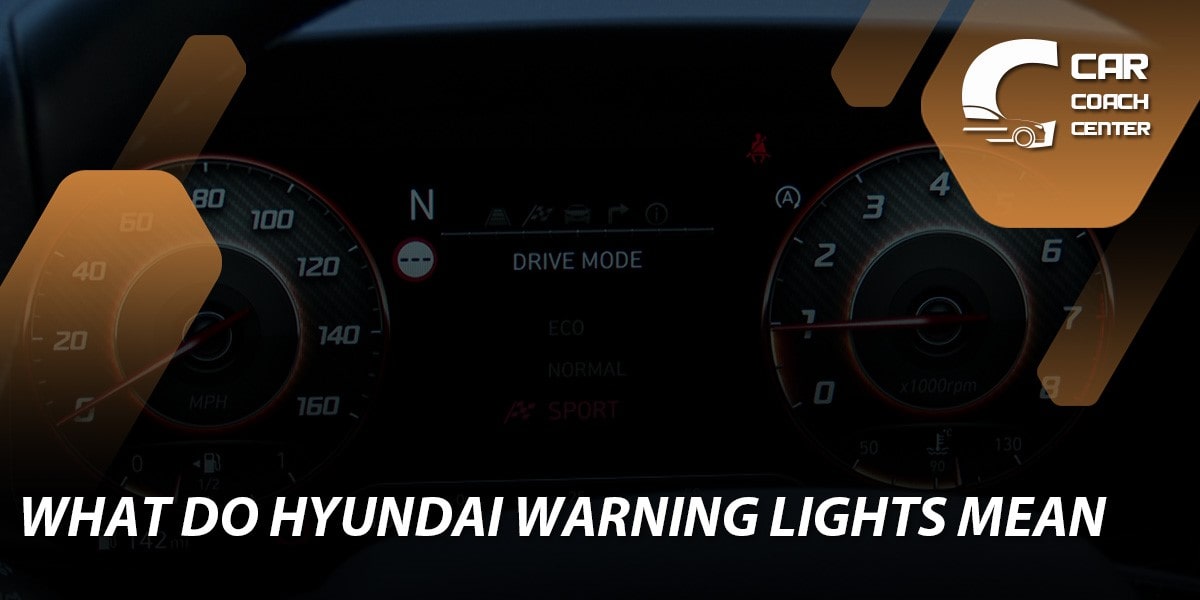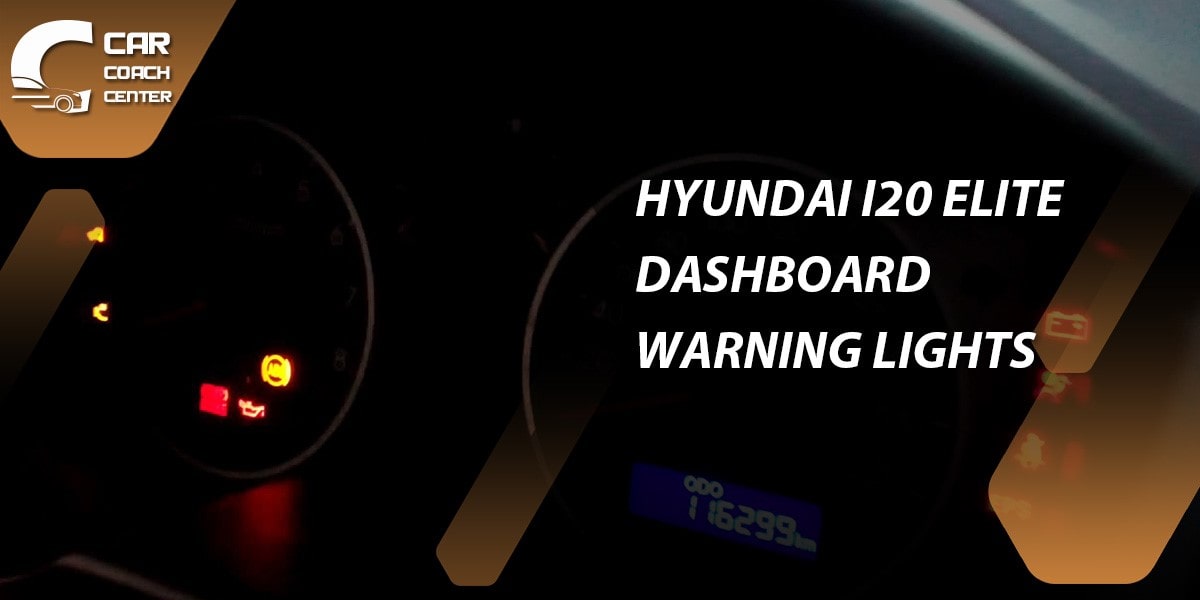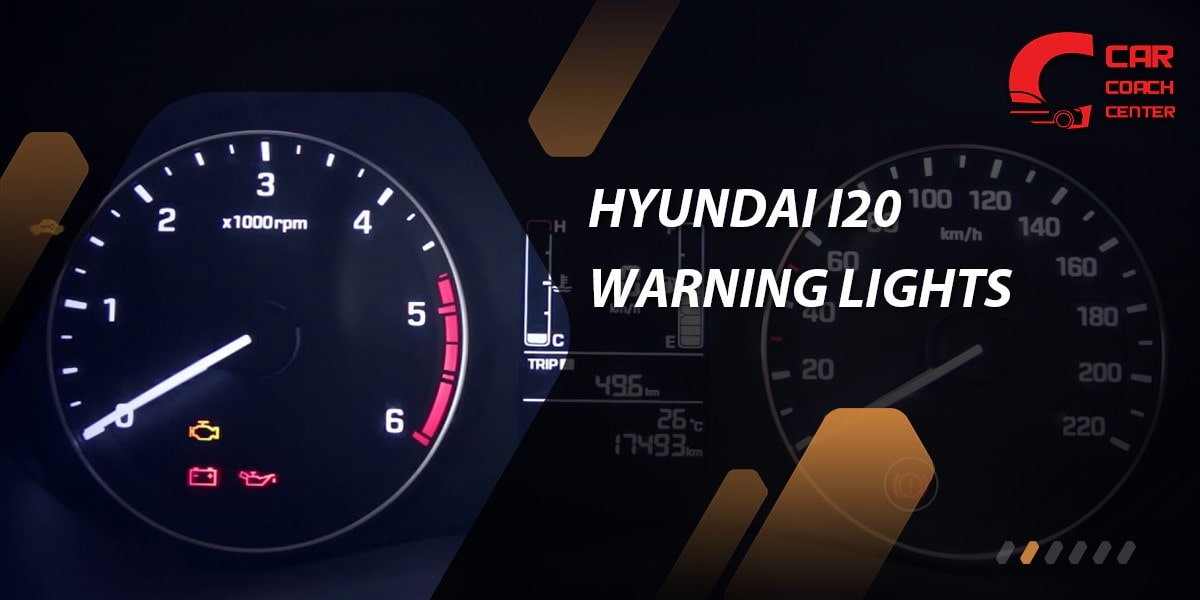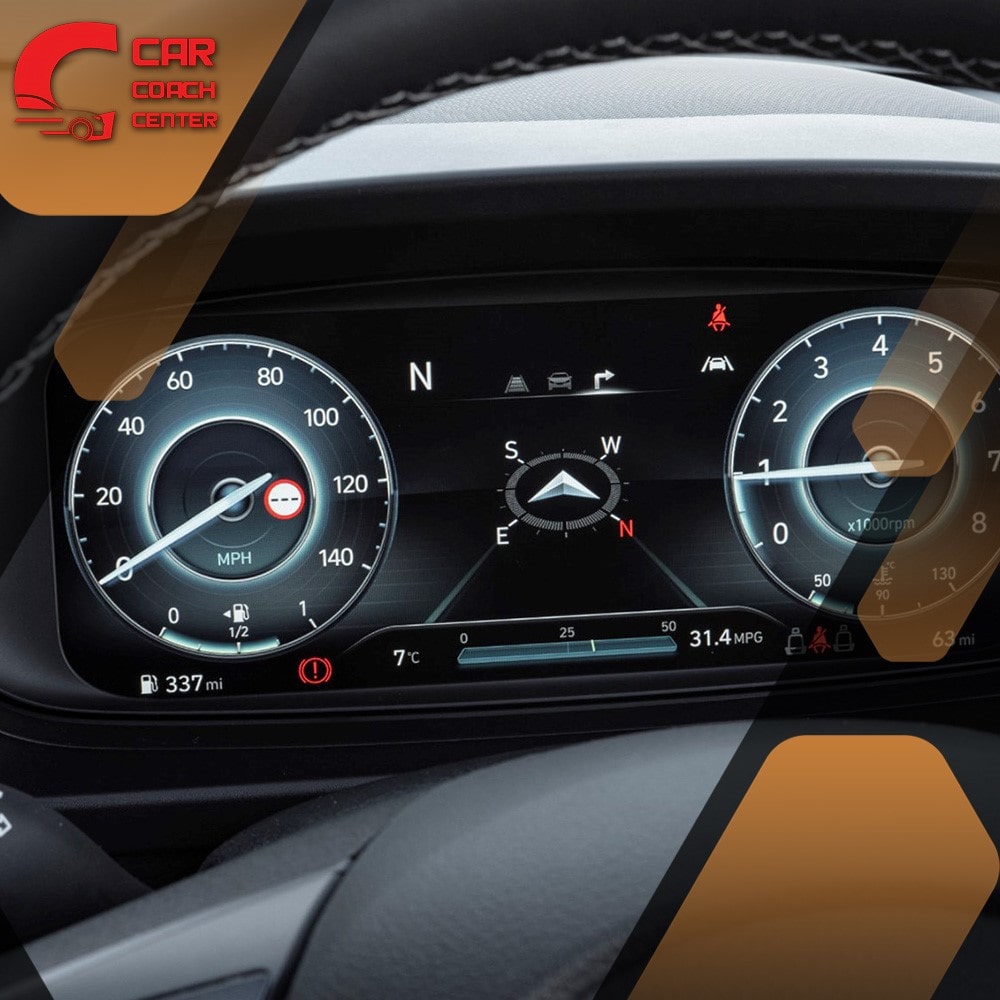Hyundai I20 Warning Lights

As we glide through the bustling city streets or embark on thrilling road trips, our Hyundai i20 becomes a steadfast companion. Amidst the excitement and convenience, however, staying attentive to our vehicle’s communication with us is crucial. The dashboard of the Hyundai i20 is adorned with an array of symbols that light up, indicating various aspects of the car’s health and performance.
Understanding these dashboard symbols is paramount for every i20 owner to ensure a safe and smooth driving experience. In this comprehensive guide, we will delve deep into the realm of the Hyundai i20 dashboard symbols and meanings, equipping you with the knowledge to interpret and respond to these warning lights effectively. From the most common dashboard icons to the lesser-known indicators, we will shed light on the significance of each symbol, empowering you with the confidence to troubleshoot issues when they arise.
So, whether you’re a seasoned i20 owner or a new enthusiast, let’s embark on this enlightening journey to decode the language of your beloved Hyundai i20’s dashboard symbols.
Decoding the Dance of Dashboard Icons: Understanding Hyundai i20 Warning Lights
As we embark on our daily drives or thrilling adventures, the dashboard of our Hyundai i20 becomes a mesmerizing theater of illuminated symbols, each with a distinct message to convey. These dashboard symbols, also known as warning lights, are the car’s way of communicating with us, alerting us to potential issues that require attention. Understanding these symbols and their meanings is essential for every Hyundai i20 owner to ensure optimal vehicle performance and safety on the road.
The Hyundai i20 boasts a sophisticated dashboard with warning lights, each representing a specific aspect of the car’s operation. These symbols are categorized by their colors – red, yellow, green, and blue – each conveying a different level of urgency.
Red warning lights
demand immediate attention and should never be ignored. They typically indicate critical issues like low engine oil pressure, overheating, or brake system problems. When a red warning light appears on the dashboard, it is vital to pull over safely, turn off the engine, and seek professional assistance.
Yellow warning lights
signify a potential problem that requires inspection and possible service. These symbols can include alerts for a malfunctioning engine, ABS issues, or low fuel. While not as urgent as red warning lights, yellow symbols should still be addressed promptly to prevent further damage to the vehicle.
Green and blue lights
are usually informational indicators, providing feedback on the vehicle’s systems, such as headlights being on, cruise control status or turn signals engaged. These symbols serve as helpful reminders rather than warning signs.
To truly grasp the significance of these Hyundai i20 dashboard symbols, referring to the owner’s manual is highly recommended. The manual offers valuable insights into each symbol’s meaning and provides guidance on the appropriate actions to take when a specific warning light appears.
As responsible i20 owners, we must pay attention to the dance of dashboard icons and promptly respond to their cues. Regular vehicle maintenance and swift action, when warning lights appear will prolong the lifespan of our beloved Hyundai i20 and ensure a safer and smoother driving experience for all our journeys ahead.

Red Flags on the Road: A Comprehensive Guide to Hyundai i20 Red Warning Lights
Among the captivating array of symbols illuminating our Hyundai i20’s dashboard, none command attention like the striking red warning lights. When these red beacons illuminate, they signal potential issues that demand immediate action and should never be overlooked. As responsible drivers, understanding the meanings behind these red warning lights is vital to ensure our safety and prevent costly damages to our cherished Hyundai i20.
Engine Oil Pressure Warning Light
This red icon, often resembling an oil can, indicates a drop in engine oil pressure. Low oil pressure can lead to insufficient lubrication, resulting in engine damage or failure. When this warning light appears, it is imperative to stop the car immediately, turn off the engine, and check the oil level. If the oil level is adequate and the warning light persists, seek professional assistance before resuming your journey.
Engine Overheating Warning Light
Depicting a thermometer inside a wavy line, this red warning light signifies that the engine’s temperature has exceeded safe limits. Overheating can cause severe damage to the engine and other components. When this light turns on, pull over to a safe location, turn off the engine, and allow it to cool down. Check the coolant level and radiator for any leaks before proceeding. If the problem persists, consult a qualified mechanic.
Brake System Warning Light
Represented by an exclamation mark inside a circle between parentheses, this red symbol indicates issues with the brake system. It could be due to low brake fluid levels, brake pad wear, or a malfunction in the braking system. Immediately reduce speed and exercise caution. Check the brake fluid reservoir; if it’s low, do not continue driving. Arrange for a brake inspection promptly.
Battery Charge Warning Light
Shaped like a battery, this warning light signals a problem with the car’s charging system. It could be a faulty alternator, a loose belt, or a weak battery. When this light comes on, avoid using electrical accessories and head to a repair shop or call for assistance to diagnose and rectify the issue.
Seat Belt Reminder Warning Light
While not as critical as the previous red warnings, this symbol, typically depicting a person wearing a seat belt, reminds occupants to fasten their seat belts. Ensuring all passengers are securely belted up is crucial for their safety in an accident.
Airbag System Warning Light
Represented by a seated person with a deployed airbag in front, this red warning light indicates a potential issue with the airbag system. When this light is illuminated, have the vehicle inspected by a qualified technician immediately to ensure that the airbags will deploy correctly in case of an accident.

Illuminate Your Drive: Exploring Hyundai i20 Yellow Warning Lights and Their Meanings
As we navigate the roads with our trusty Hyundai i20, the dashboard symbols serve as beacons of communication, conveying essential information about our vehicle’s health and performance. Among these symbols, the yellow warning lights hold a unique significance, indicating potential issues that require attention and inspection. Understanding these yellow warning lights and their meanings is crucial for every Hyundai i20 owner to ensure a smooth and trouble-free driving experience.
Check Engine Warning Light
The yellow check engine light, often resembling an engine outline, indicates a potential issue with the vehicle’s engine or emissions control system. While it may not be an emergency, ignoring it could lead to more significant problems. Consider scheduling a diagnostic test to identify the underlying cause when this light appears and take appropriate action accordingly.
Anti-lock Braking System (ABS) Warning Light
Represented by the letters “ABS” inside a circle, this yellow symbol indicates a problem with the ABS. While the standard braking system remains functional, the ABS may not engage in case of sudden braking or slippery road conditions. Have a professional inspect the ABS system to ensure it operates correctly when needed.
Low Fuel Warning Light
Shaped like a gas pump, this yellow warning light reminds us that our fuel level is critically low. Refuel immediately to prevent running out of gas unexpectedly, especially on long journeys.
Tire Pressure Monitoring System (TPMS) Warning Light
Depicting an exclamation mark inside a horseshoe-shaped tire, this yellow warning light signals an issue with the tire pressure. One or more tires have low pressure, potentially affecting handling and fuel efficiency. Check and adjust the tire pressure as per the manufacturer’s recommendations.
Power Steering System Warning Light
This symbol, often resembling a steering wheel with an exclamation mark, indicates a problem with the power steering system. While the steering remains operational, maneuvering the vehicle may require increased effort. Seek professional assistance to diagnose and rectify the issue.
Malfunction Indicator Lamp (MIL) Warning Light
Similar to the check engine light, the MIL symbol, represented by an engine outline with the word “CHECK,” indicates a potential problem with the vehicle’s emissions control system. It is essential to address this warning light promptly to ensure compliance with emission regulations and maintain optimal engine performance.

From A to Z: The Complete List of Hyundai i20 Warning Lights and How to Respond
As Hyundai i20 drivers, being well-versed in the language of our dashboard symbols is essential to ensure the health and safety of our vehicles. From red beacons demanding immediate attention to yellow illuminations cautioning us of potential issues, understanding each warning light’s meaning empowers us to take appropriate action and prevent costly damages. Let’s explore the complete list of Hyundai i20 dashboard warning lights, from A to Z, and learn how to respond when they grace our dashboards.
ABS Warning Light
When the letters “ABS” appear inside a circle, it indicates a potential issue with the Anti-lock Braking System. While standard braking remains functional, seek professional inspection to ensure the ABS operates correctly during emergencies.
Battery Charge Warning Light
Shaped like a battery, this light signals a problem with the car’s charging system. Avoid using electrical accessories and have the vehicle checked to diagnose and rectify the issue.
Check Engine Warning Light
Depicting an engine outline, this yellow light warns of a potential problem with the engine or emissions control system. Schedule a diagnostic test and address any underlying issues.
Engine Oil Pressure Warning Light
Resembling an oil can, this red icon signals low engine oil pressure. Stop the car, check the oil level, and seek professional assistance.
Engine Overheating Warning Light
Featuring a thermometer inside a wavy line, this red warning indicates that the engine temperature has exceeded safe limits. Pull over, turn off the engine, and allow it to cool down before inspecting the coolant level and radiator.
Low Fuel Warning Light
Shaped like a gas pump, this yellow symbol reminds us to refuel when the fuel level is critically low.
Malfunction Indicator Lamp (MIL) Warning Light
Similar to the check engine light, this engine outline with the word “CHECK” suggests a potential issue with the emissions control system. Promptly address this warning to maintain optimal engine performance.
Power Steering System Warning Light
Resembling a steering wheel with an exclamation mark, this symbol indicates a problem with the power steering system. Seek professional assistance to diagnose and fix the issue.
Seat Belt Reminder Warning Light
Depicting a person wearing a seat belt, this light serves as a reminder to fasten seat belts for the safety of all occupants.
Tire Pressure Monitoring System (TPMS) Warning Light
Featuring an exclamation mark inside a horseshoe-shaped tire, this light warns of low tire pressure. Check and adjust tire pressure as needed for improved handling and fuel efficiency.
Beyond the Dashboard: Troubleshooting Hyundai i20 Warning Lights with DIY Tips
As Hyundai i20 owners, we often face the illumination of various warning lights on our dashboards. While these symbols effectively communicate potential issues with our vehicles, they can also trigger uncertainty and concern. Before rushing to the nearest mechanic, let’s explore some DIY troubleshooting tips to address common Hyundai i20 dashboard warning lights and gain confidence in resolving minor issues ourselves.
Check Engine Warning Light
When the check engine light appears, checking the gas cap first is essential. A loose or damaged gas cap can trigger the light. Tighten the cap securely and wait a few driving cycles to see if the light goes off. If the light persists, consider checking the oxygen or mass airflow sensors. However, diagnosing engine-related problems may require specialized equipment, so it’s advisable to seek professional assistance if the issue persists.
Low Fuel Warning Light
The low fuel warning light is a simple reminder to refuel. Ensure you have enough fuel in the tank to avoid running out, especially during long journeys.
Tire Pressure Monitoring System (TPMS) Warning Light
To address the TPMS warning light, check the tire pressure of all four tires using a pressure gauge. Inflate or deflate the tires to meet the manufacturer’s recommended pressure levels. If the light remains on after adjusting the tire pressure, there might be an issue with the TPMS sensors, and professional inspection is recommended.
Battery Charge Warning Light
If the battery charge warning light appears, inspect the battery terminals for corrosion and clean them if necessary. Ensure the battery connections are secure. If the light continues to illuminate, the battery or the alternator may require replacement, which may need professional assistance.
ABS Warning Light
If the ABS warning light persists, ensure that the brake fluid level is adequate. Low brake fluid can trigger this warning. If the brake fluid level is fine, there might be an issue with the ABS system, requiring professional diagnosis and repair.
Power Steering System Warning Light
If you encounter the power steering system warning light, check the power steering fluid level. Low fluid levels can cause difficulties in steering. The power steering system might require professional inspection and repair if the fluid level is adequate.

Navigating the Unknown: What to Do When Hyundai i20 Warning Lights Catch You Off Guard
As we embark on our daily journeys with our Hyundai i20, the appearance of warning lights on the dashboard can be an unnerving experience, especially when we least expect it. While we strive to be vigilant drivers, certain situations may catch us off guard, leaving us uncertain how to respond to these dashboard symbols. In such moments, it’s essential to stay calm and take appropriate steps to ensure our safety and the well-being of our vehicle.
Don’t Panic – Stay Calm
The sudden illumination of warning lights can be alarming, but it’s crucial to remain calm and focused. Panicking leads to hasty decisions that could worsen the situation.
Identify the Warning Light
Take a moment to identify the warning light. Refer to your Hyundai i20 owner’s manual to understand the meaning of the specific symbol and its urgency level. Some lights, like red ones, require immediate attention, while others may indicate less critical issues.
Address Red Warning Lights First
Red warning lights typically indicate serious problems that need immediate action. If a red warning light appears, safely pull over to the side of the road as soon as possible. Turn off the engine and assess the situation. If needed, contact roadside assistance or a professional mechanic for help.
Check Basic Functions
After ensuring your safety, check some basic functions like the gas cap, engine coolant level, and engine oil level. A loose gas cap or low fluid levels can sometimes trigger warning lights.
Assess Your Surroundings
If you’re away from familiar territory or driving in unfamiliar areas, take note of your surroundings. Look for nearby service stations, repair shops, or places to safely park and seek assistance.
Seek Professional Help
If you need clarification on the warning light’s meaning or if it persists after basic checks, it’s best to seek the help of a qualified mechanic. Professional diagnosis will accurately identify the issue and ensure proper repairs are made.
Continue with Caution
If the warning light is not red and the vehicle seems functioning normally, proceed with caution to the nearest service center or your destination. However, keep a close eye on your vehicle’s performance and be prepared to take action if anything changes.
Conclusion
In conclusion, understanding the language of Hyundai i20 dashboard symbols empowers us as responsible drivers to navigate our journeys confidently and responsibly. We gain valuable insights into our vehicle’s health and performance by delving into the meanings behind each warning light, from the striking red beacons signaling immediate attention to the cautionary yellow illuminations.
Armed with DIY troubleshooting tips and a calm demeanor when warning lights catch us off guard, we can address minor issues efficiently while knowing when to seek professional help for critical situations. The CarCouchCenter.com website is invaluable, offering comprehensive information and guidance on Hyundai i20 dashboard symbols and their meanings.
As we embrace the enlightenment gained from this journey, let’s prioritize regular maintenance, attentive driving, and swift responses to warning lights to ensure that each drive with our cherished Hyundai i20 is nothing short of safe, enjoyable, and worry-free.
Frequent Questions
What does the red engine oil pressure warning light indicate?
The red engine oil pressure warning light signals low engine oil pressure, requiring immediate attention to prevent engine damage.
Why is the check engine light on in my Hyundai i20?
The check engine light could indicate various engine or emissions-related issues, necessitating a diagnostic test for accurate identification.
How should I respond to the ABS warning light in my Hyundai i20?
Check the brake fluid level if the ABS warning light appears. If it's low, add more fluid; if the light persists, seek professional inspection for the ABS system.


